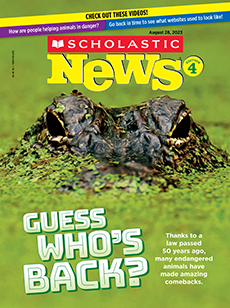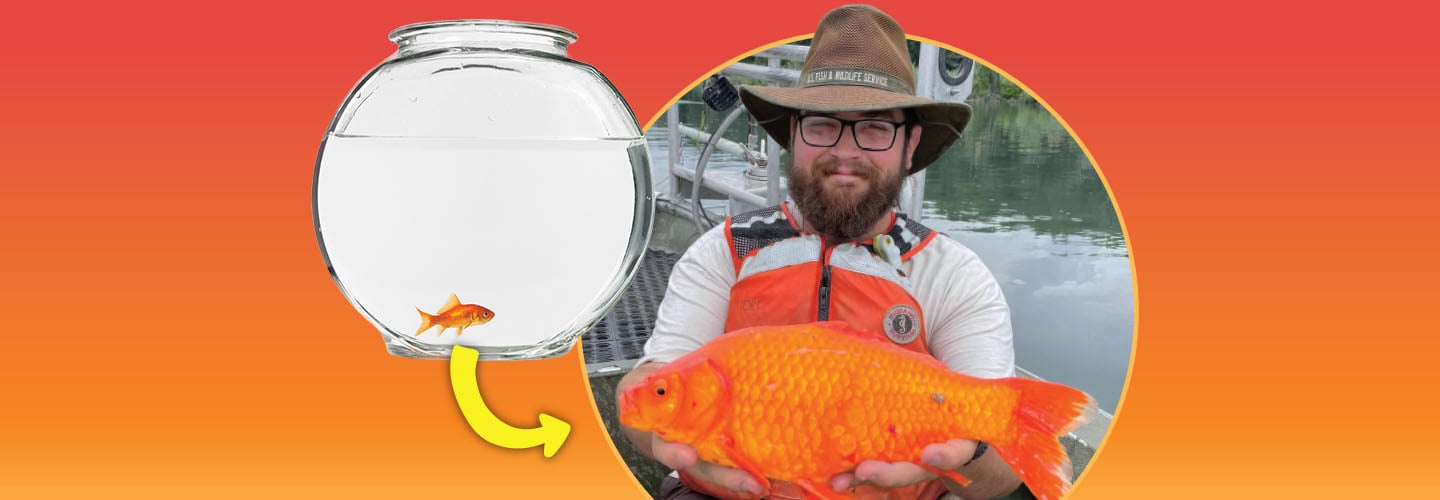People couldn’t believe what they were seeing. In February, the U.S. Fish and Wildlife Service posted a photo of a goldfish on social media. The fish was nearly the size of a football! Researchers in Pennsylvania had found it while working in Lake Erie.
But experts say what made for a great photo was also a sign of danger. Goldfish in ponds, lakes, and rivers in the U.S. are an invasive species. That term refers to animals or plants that move into an area and harm species that already live there.
There are millions of goldfish in U.S. waterways. They can be found everywhere from warm Florida ponds to chilly lakes in Minnesota. How did they get to these bodies of water? And how do they get so big?
People couldn’t believe their eyes. In February, the U.S. Fish and Wildlife Service posted a photo of a goldfish online. The fish was nearly the size of a football! Researchers in Pennsylvania had found it in Lake Erie.
The fish made for a great photo. But experts say it was also a sign of danger. Goldfish in ponds, lakes, and rivers in the U.S. are an invasive species. Invasive species are animals or plants that move into an area and harm species that already live there.
There are millions of goldfish in U.S. waters. They can be found everywhere, like warm Florida ponds and chilly Minnesota lakes. How did they get to these bodies of water? And how do they get so big?

